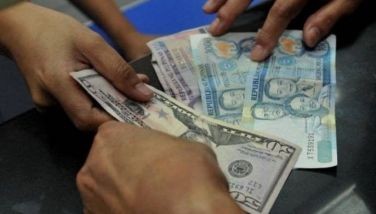Government urged to adopt measures to curb brain drain problem
November 12, 2006 | 12:00am
Multi lateral funding agency Asian Development Bank (ADB) has recommended taxing brain drain in order to curb the growing problem of losing educated laborers in the country.
"On the government’s part, there is an urgent need to formulate concrete public policy measures to attack the brain drain problem and to attract knowledge transfers," ADB said in a publication titled "Converting Migration Drains into Gains."
According to the ADB, there is no policy to address the issue of brain drain in the country, causing a significant gap between migration and development.
Aside from taxing the brain drain, ADB said the government can demand compensation from departing nationals or even delay skilled workers’ departure through compulsory service.
It cited that because of the absence of such policy, the Philippine Medical Association has decided to take matters into their own hands by encouraging their members, especially new graduates, to serve the country for three years before migrating.
"This will enable the country’s health sector to build a new roster of medical professionals to replace those migrating overseas," ADB explained.
Addressing the issue of brain drain is important because its detrimental effects on developing countries like the Philippines come from the migration of professionals who are critical to institution building.
"If migration is due to economic and political instability, financial capital — not just human capital — is lost," the study explained.
Because of this, the study said that although the country is benefiting from remittances and overseas jobs, these are only short term gains.
"Medium to long term effects will leave the country in a deficit," the study said.
According to the study, brain drain has been apparent in the country since 1955. In fact for that year, 44 percent of the overseas Filipino workers (OFWs) and 40 percent of the emigrants have college degrees while only half of this, or 20 percent of the workers in the Philippines, have the same educational background.
Through the years, the number of skilled overseas workers are rising as evidenced by the data gathered by the Bangko Sentral ng Pilipinas. The study said central bank officials attribute any increase in remittances to the rising deployment of skilled workers overseas.
Add to this, the study said those that leave the country are those who are part of the most productive age range, between 25-44. This suggests a loss of those with most experience, on-the-job training and likely supervisory skills.
"On the government’s part, there is an urgent need to formulate concrete public policy measures to attack the brain drain problem and to attract knowledge transfers," ADB said in a publication titled "Converting Migration Drains into Gains."
According to the ADB, there is no policy to address the issue of brain drain in the country, causing a significant gap between migration and development.
Aside from taxing the brain drain, ADB said the government can demand compensation from departing nationals or even delay skilled workers’ departure through compulsory service.
It cited that because of the absence of such policy, the Philippine Medical Association has decided to take matters into their own hands by encouraging their members, especially new graduates, to serve the country for three years before migrating.
"This will enable the country’s health sector to build a new roster of medical professionals to replace those migrating overseas," ADB explained.
Addressing the issue of brain drain is important because its detrimental effects on developing countries like the Philippines come from the migration of professionals who are critical to institution building.
"If migration is due to economic and political instability, financial capital — not just human capital — is lost," the study explained.
Because of this, the study said that although the country is benefiting from remittances and overseas jobs, these are only short term gains.
"Medium to long term effects will leave the country in a deficit," the study said.
According to the study, brain drain has been apparent in the country since 1955. In fact for that year, 44 percent of the overseas Filipino workers (OFWs) and 40 percent of the emigrants have college degrees while only half of this, or 20 percent of the workers in the Philippines, have the same educational background.
Through the years, the number of skilled overseas workers are rising as evidenced by the data gathered by the Bangko Sentral ng Pilipinas. The study said central bank officials attribute any increase in remittances to the rising deployment of skilled workers overseas.
Add to this, the study said those that leave the country are those who are part of the most productive age range, between 25-44. This suggests a loss of those with most experience, on-the-job training and likely supervisory skills.
BrandSpace Articles
<
>
- Latest
- Trending
Trending
Latest
Trending
Latest
Recommended



























